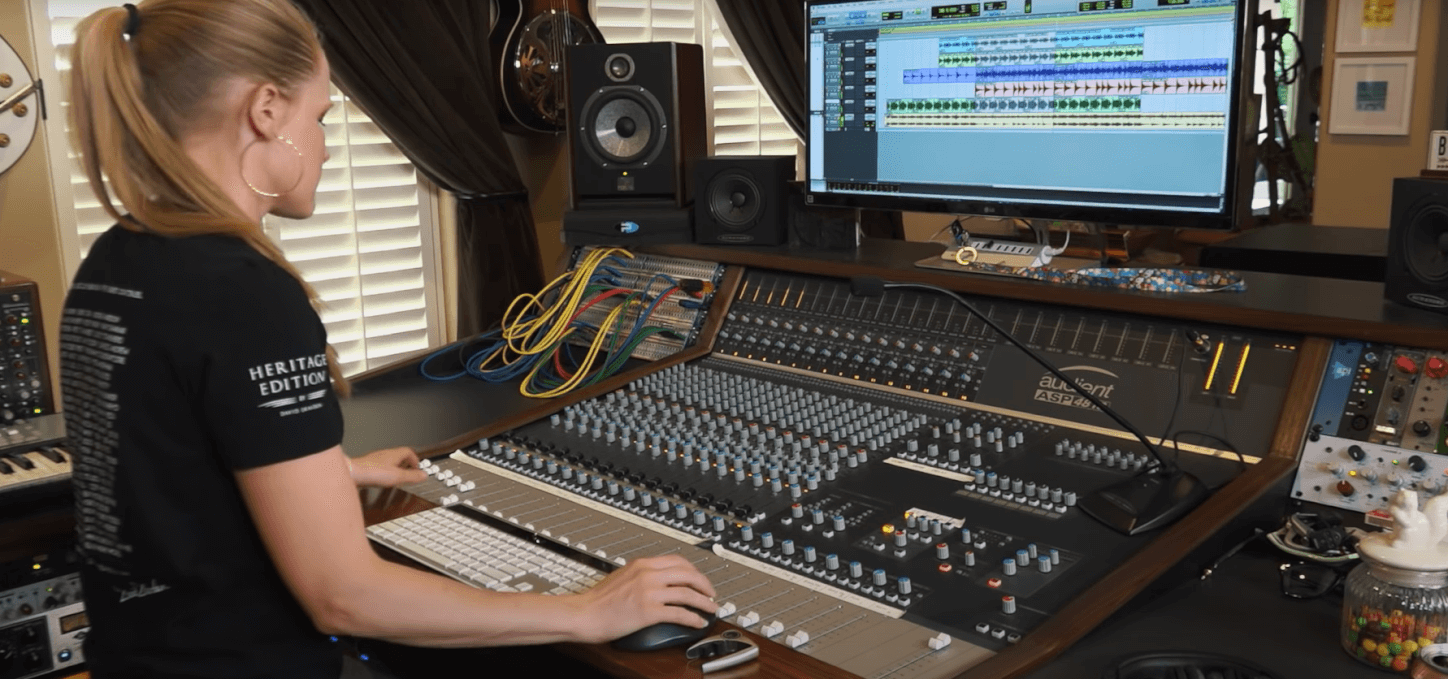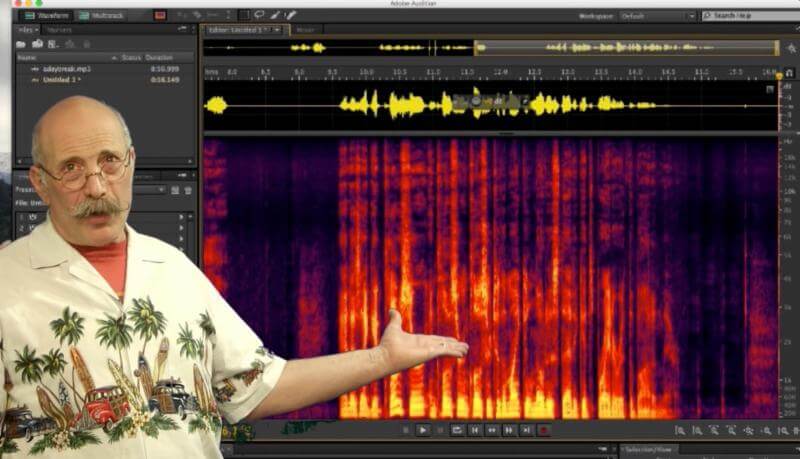Getting the most out of your recording sessions
Before we start looking at microphone choice and placement we need to talk about how to get the most out of your recording sessions. There are many things that can damage a vocalist’s voice, so of course minimizing the use of these substances before a session is key. Make sure you let the singer know to stay away from dairy (milk, cheese, chocolate) as well as avoiding cigarettes and menthol before and during the session.
When you’re ready to start recording vocals it’s important to keep hydrated. Drinking, or offering, water/tea to the singer will keep their vocal chords flexible and in the best shape to sing.
Warming up
You wouldn’t play sport without doing your warm ups first and the same goes for singing. Warming up your vocal chords means that when you come to recording the takes you’re not going to be straining your vocal chords and damaging your voice. As both a singer and engineer, it’s important to learn good warm up techniques to get the most out of your session.
Making the talent comfortable
Making sure the singer is comfortable is probably the most important factor for achieving great sounding vocals. If they’re comfortable they’re going to sing a lot better than if they’re nervous or feeling awkward. As singing is such a personal thing, make sure you give lots of praise and make them feel at home. Often something as simple as making them a cup of tea or offering food, such as an apple, will make the singer feel more at ease.
Taking their mind off the job at hand can also encourage great vocal takes. It really depends on the singer, some may like to get the vocal takes done in between the conversations whilst other may like to get their head down and get the vocals done and save the conversation for later.
Once the singer feels comfortable making sure the headphone mix is crucial, if they can’t hear enough of themselves then singers tend to sing sharper to compensate whereas if they can hear too much of themselves they’ll tend to sing flat. Balancing them and the track is a key factor in getting that great vocal take.
Microphone Choice
With the variety of microphones out there, it might be difficult at first to decide what microphones are best to record vocals. If you only have one microphone then your decision has been made for you! However if you’re looking to buy a microphone or have a range of microphones to choose from then the decision is made harder. Before choosing your microphone it’s important to take a step back and think about how you want your vocal to sound as well as the voice of the singer. Matching the right microphone to a singer will turn a good take into a great one.
Condenser vs Dynamic vs Ribbon
Before reading on, make sure you check out our Microphone types article which will help you understand the differences between each microphone type.
Choosing the right type of microphone is an important decision as once you’ve recorded the final vocal take, there’s no way of changing it. The industry standard would be using a large diaphragm condenser microphone as they pick up the most detail and frequency content. This way you’re not left needing more in the mix. However, whilst condenser microphones are suitable for most styles of singing there are some jobs that a dynamic microphone will represent the singer’s voice better. For example if you’re wanting to record loud vocals/screams then the majority of engineers will opt for a dynamic microphone such as the Shure SM7b or Electrovoice RE20. Dynamic microphones are better at handling higher SPL which is why they’re preferred.
Now, you might be asking yourself “Why would I need to use a ribbon microphone if condenser and dynamic microphone do exactly what I need?” Although rarely used, ribbon microphones offer you different characteristics than your standard condenser or dynamic. Ribbon microphones often sound warmer and darker than anything else, rolling off higher frequencies in favour of boosting the bottom end. When recording with a ribbon microphone it’s important to remember a few things:
- Use a pop shield at all times.
- Ribbon microphones are a lot more delicate than condensers or dynamic microphones so using a pop shield protects the fragile ribbon.
- Ribbons have a figure of 8 polar pattern therefore will have more of a proximity effect.
Polar Patterns
Polar Patterns are crucial part of microphone technology and knowing when to use each of them is invaluable. Each pattern has it’s strengths and weaknesses so knowing these will ultimately lead to a better sounding vocal take. Below is an image detailing each pattern.
http://www.ny.garnishmusicproduction.com/microphone-polar-patterns-beginners/
Each of these polar patterns have different uses. Cardioid and figure of 8 polar patterns will experience a bass boost the closer you get to them, called the proximity effect. This can be put to
good use if you want to ‘fatten’ up a slightly weaker singers voice however can also become overpowering if used with the wrong voice. To avoid this make sure the singer is standing around 6 inches from the microphone. Due to the nature of the omnidirectional polar pattern it doesn’t exhibit the proximity effect.
Usually a cardioid pattern would be chosen to record vocals as you want to pick up the most sound from the front of the mic, where the singer will be standing, and reject anything else that isn’t them. Learning where each microphone rejects sound from is a great tool when micing a singer with an acoustic guitar or even a live performance where all the musicians are in 1 room.
Microphone Placement
When recording vocals it’s crucial to have the microphone in the right place. Now it goes without saying that you’re going to have to place it in front of the vocalist, this much is obvious. However there’s a few small tips that will help you fine tune your vocal sound. First of all, place the microphone around 6 inches from the singer. If the singer is having trouble with staying that distance away it’s a good idea to attach a pop shield onto another mic stand and move that to where they need to stand. This also makes it a lot easier to angle your pop shield, saving you valuable time. If you don’t have a pop shield handy angling the mic off axis can also reduce plosives.
When positioning the microphone make sure the diaphragm of the mic is in line with the vocalist’s mouth. This should give you the most natural sound. However, placing the microphone higher and angling it down will produce a more nasally sound and placing it lower will give the recording a more chesty, bassy sound. Adjust the microphone accordingly to achieve the desired sound.
Recording isolation
One common misconception about recording professional sounding vocals is that you have to record them in an isolated sound booth. The reality is that most singers don’t perform their best when they’re isolated away from everything; as we already know making the performer as comfortable as can be is key, so putting them away in a closet may not be the best option.
One thing many people get wrong when trying to isolate their microphone from interference is putting acoustic foam behind the microphone. The reason why this doesn’t make a lot of sense is because when using a cardioid polar pattern the microphone is mostly picking up from the front. For this reason it makes sense to put acoustic foam behind the singer so that it blocks anything going into the mic. This will provide the most isolation.
As communication between the signer and the recording engineer is key, many producers will record with the singer in the same room as them. This way they can both talk easily and freely after a take without going through talkback etc. Providing you’ve both got a set of headphones then recording in the control room won’t be a problem!
Conclusion
Hopefully by following these tips you’ll be on your way to a great vocal performance and in turn great vocal recording! Make sure to experiment with polar patterns/microphone types and placement because sometimes the best sounds come from the most unlikely places.
Our Products
-

2in | 2out Audio Interface
-

10in | 6out Audio Interface
-

10in | 14out Audio Interface
-

20in | 24out Audio Interface
-

24in | 32out Audio Interface
-

2in | 2out Audio Interface
-

4in | 4out Audio Interface
-

24in | 24out Audio Interface
-

Everything you need to start recording
-

8 Channel Smart Preamp with AD/DA
-

8 Channel Mic Pre & ADC
-

8 Channel Mic Pre + Tone Control
-

Modular Analogue Recording Console
-

Small Format Analogue Recording Console
-

Small Format Analogue Recording Console
-

Immersive Audio Interface and Monitor Controller
-

Desktop Monitor Controller



